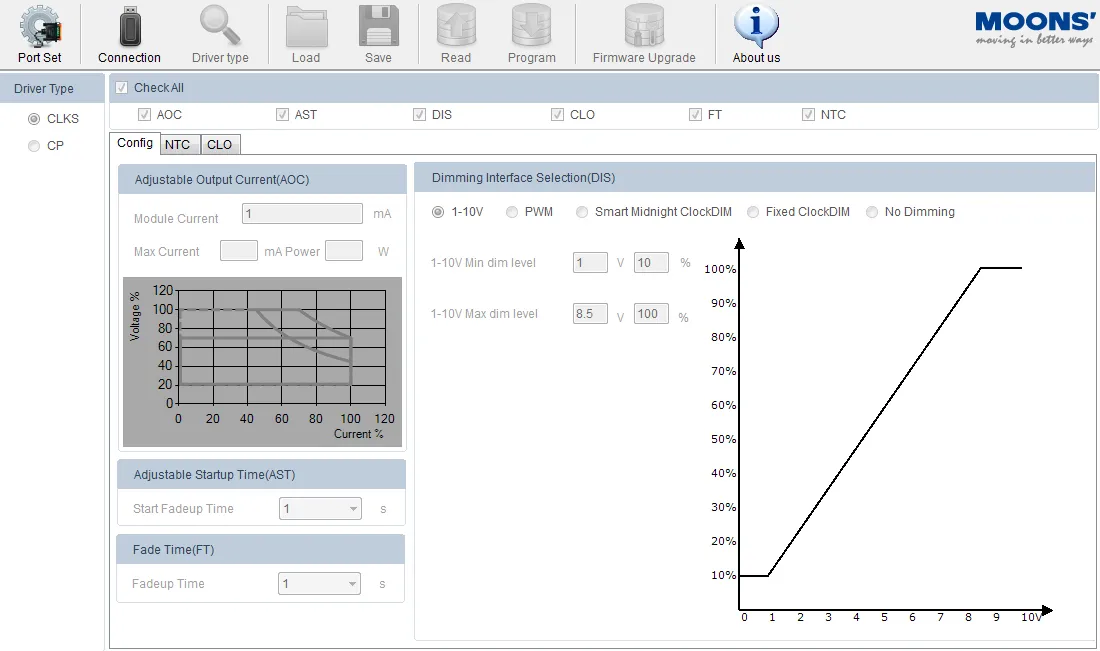0-10V and 1-10V
0-10V and 1-10V are analog protocols used for dimming lighting. Both systems use voltage levels to communicate with the driver. There is an article about 0(1)-10V dimming drivers. We will discuss the difference between 0-10V and 1-10V in this article.
The difference between 0-10V and 1-10V
1-10V is a current sink system. The dimmer does not require mains power, and its output status is unstable when dimming signals are less than 1V or even short the dimming wires. It may be completely off or there may still be some light emanating from the LED module. It would be necessary to completely turn off the driver to prevent this situation from occurring. MOONS' drivers support a 'light off' function without the need of switching the mains' power. Users can set minimal lighting levels through programmable software—MSSL200. Fig1 is the configuration software interface.

Fig.1 Configuration Software
0-10V is a current source system, which means that the dimmer provides the power for the 0-10V signals – a mains connection to the dimmer is necessary. MOONS' 0-10V Drivers are programmable and dim down to 0.1% at a minimum light level.
When to use 0-10V or 1-10V?
0-10V and 1-10V systems are best suited for simple installations. In complex systems, installation can be challenging because each group requires its wiring. 010V is mostly used for entertainment lighting while 110V is more common for general lighting.
